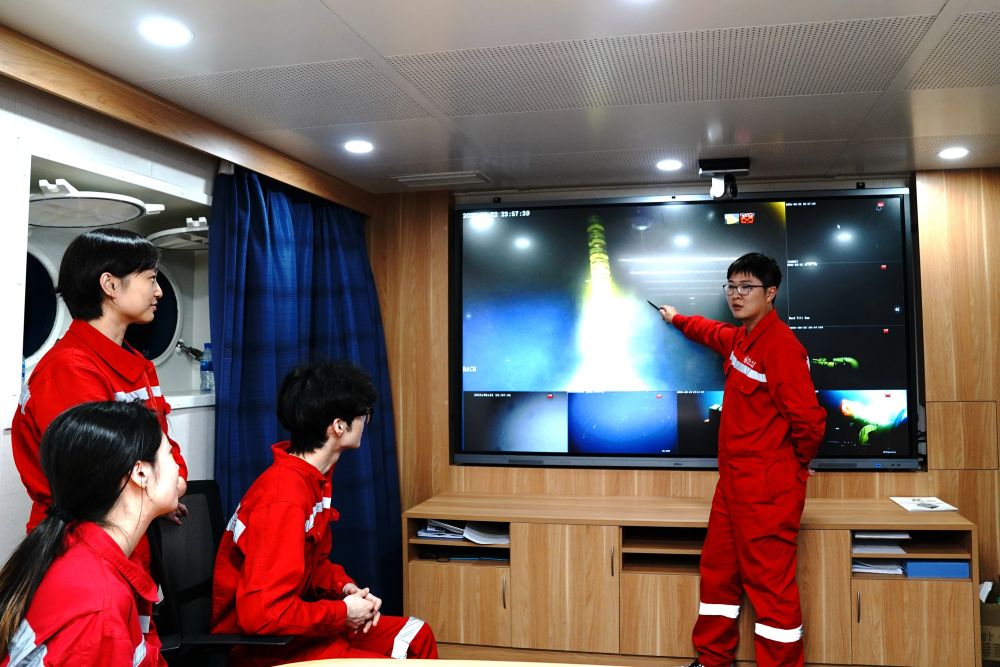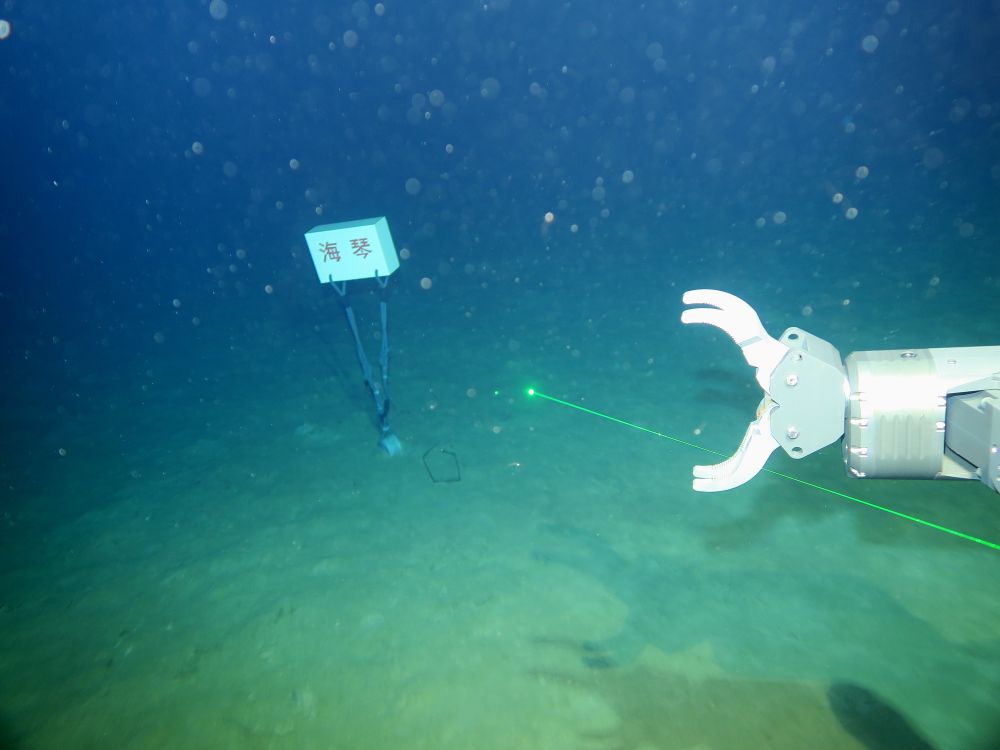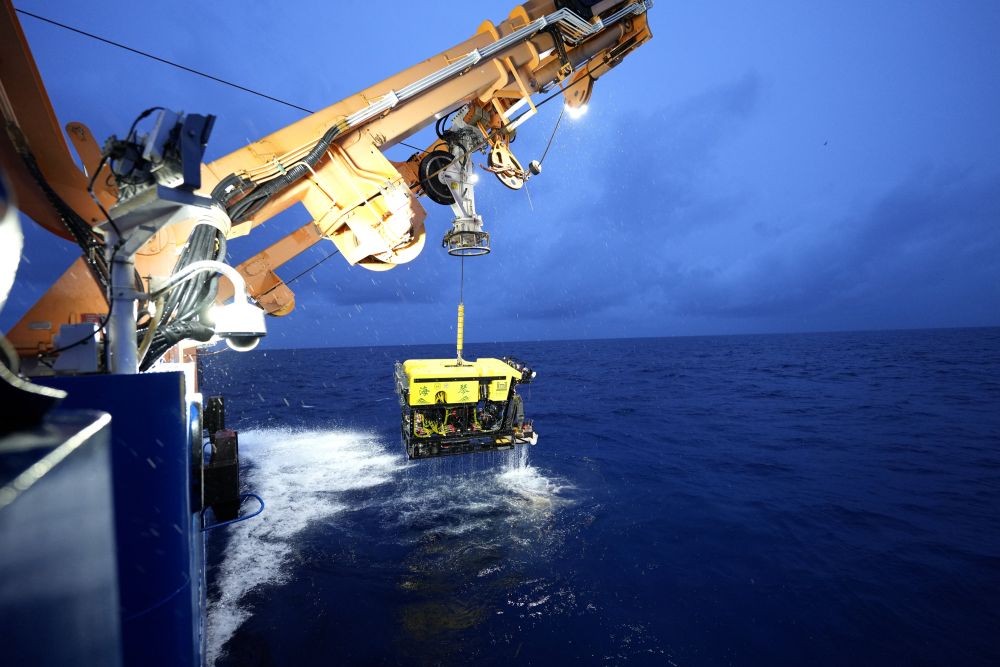In the early morning of August 23, amid a light drizzle and blue dawn over the South China Sea, China’s independently developed 6,000-meter-class deep-sea remotely operated vehicle (ROV) “Haiqin” returned triumphantly after an 8-hour operation from a depth of 4,140 meters. The successful sea trial marks another powerful tool for China’s deep-sea research.
“Haiqin” was independently developed by the Underwater Engineering Research Institute and is a new, highly efficient deep-sea electric ROV system custom-built for the comprehensive marine research and training vessel. It is equipped with scientific devices such as high-definition cameras, multi-functional robotic arms, and detection sensors, and possesses intelligent operation capabilities including automatic orientation, hovering positioning, and automatic route tracking.
Around 22:00 on August 22, the vessel arrived at the sea trial site in the central South China Sea, with rain falling on the dark sea surface. The ship activated its dynamic positioning system to hold steady. On the stern main deck, the “Haiqin” operation team and the onboard technical team worked closely together in the rain. The 3.6-ton “Haiqin” was slowly lifted by the stern A-frame, connected to an anti-sway device, swung outward into the sea, and attached with buoyancy spheres before plunging into the deep ocean, trailing a long electro-optical composite cable.

In the surface monitoring and power station for “Haiqin”, 12 neatly arranged displays captured every move of the ROV underwater. Data flickered on the screens as the vehicle went deeper, finally reaching 4,140 meters and settling on the seabed. A cloud of fine sediment, like smoke rising from the ocean floor, momentarily blurred the camera view. “Haiqin” collected seabed sediment samples and placed a marker.
On August 20 and 21, “Haiqin” also conducted sea trials at depths of 320 meters and 1,600 meters, collecting scientific samples including sponges, starfish, sea cucumbers, deep-sea fish, and seabed rocks.

It was stated that through multiple dives from shallow to deep depths, “Haiqin” fully validated various technical indicators of functionality and performance, meeting design objectives and requirements. The sea trials allowed the onboard technical team and the “Haiqin” operation team to thoroughly磨合, laying a foundation for the equipment’s future routine application.
The vessel departed from Zhuhai on August 13 to carry out the “Haiqin” ROV sea trial and scientific




